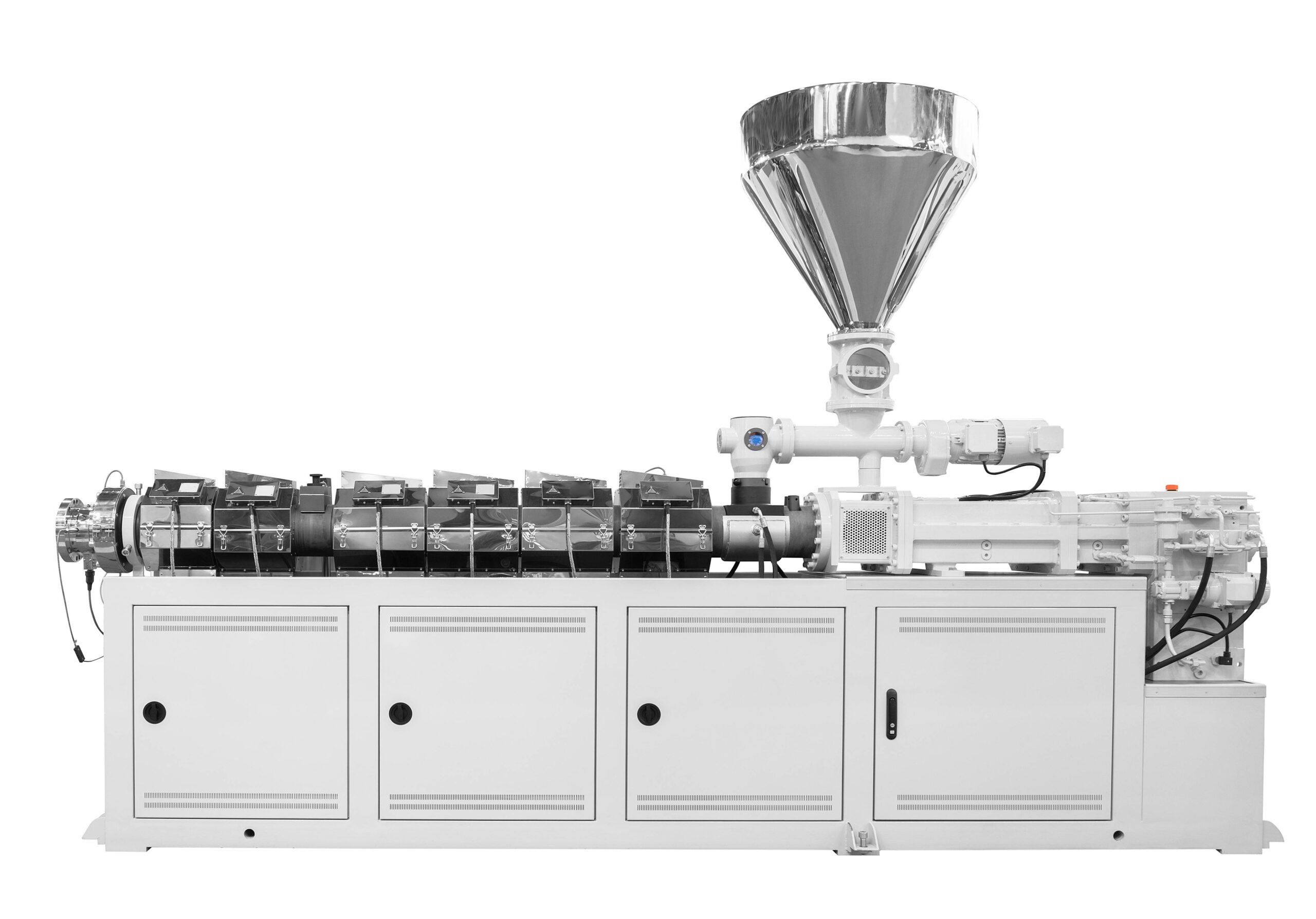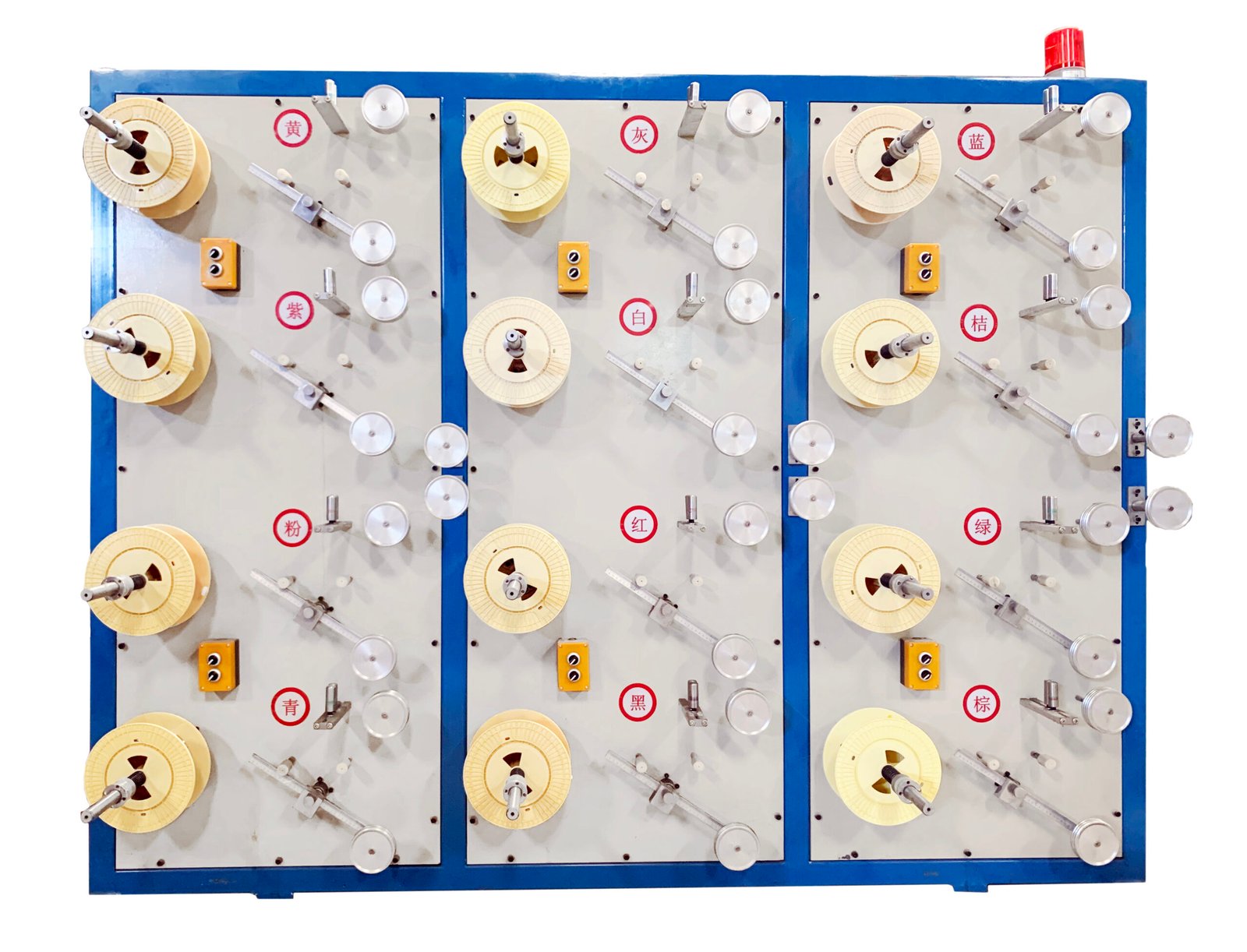ভূমিকা
আপনি কি আপনার শিল্পে বিপ্লব আনার জন্য একটি ফাইবার অপটিক কেবল উৎপাদন লাইন তৈরি করতে চান? যদি তাই হয়, তাহলে বাজারে উপলব্ধ সেরা সরঞ্জামগুলিতে বিনিয়োগ করা লাভজনক - কিন্তু এত বিকল্পের সাথে, কোথা থেকে শুরু করবেন তা জানা চ্যালেঞ্জিং হতে পারে।
আমরা এই নির্দেশিকাটি একত্রিত করেছি: সিইও, সিএমও, ক্রেতা এবং প্রকৌশলীদের তাদের কার্যক্রমের জন্য সঠিক ফাইবার অপটিক কেবল উৎপাদন লাইন বেছে নিতে সহায়তা করার জন্য।
কতটা ব্যান্ডউইথ প্রয়োজন তা গণনা করা থেকে শুরু করে কোন পরিবেশগত পরিস্থিতির প্রতি বিশেষ মনোযোগ দেওয়া প্রয়োজন তা বোঝা - উচ্চ-গতির যোগাযোগ অবকাঠামোর ভবিষ্যৎ নির্মাণ সম্পর্কে আপনার যে কোনও প্রশ্নের উত্তর এক জায়গায় দেওয়া হবে। তাই পড়তে থাকুন এবং নিখুঁত ফাইবার অপটিক্স কেবল উৎপাদন লাইন নির্বাচনের যাত্রার জন্য প্রস্তুত হোন!
ফাইবার অপটিক কেবল উৎপাদন লাইনের প্রকারভেদ
ফাইবার অপটিক কেবল উৎপাদন লাইন দুটি প্রধান ধরণের: অভ্যন্তরীণ এবং বহিরঙ্গন। আপনার ব্যবসার জন্য উৎপাদন লাইন নির্বাচন করার সময় প্রতিটি ধরণের সুবিধা এবং অসুবিধা রয়েছে। আসুন প্রতিটি ধরণের উপর ঘনিষ্ঠভাবে নজর দেওয়া যাক:
- ইনডোর ফাইবার অপটিক কেবল উৎপাদন লাইন: এই ধরণের উৎপাদন লাইনটি ডেটা সেন্টার, অফিস ভবন এবং আবাসিক বাড়ির মতো অভ্যন্তরীণ অ্যাপ্লিকেশনের জন্য ব্যবহৃত ফাইবার অপটিক কেবল তৈরির জন্য ডিজাইন করা হয়েছে।
ইনডোর ফাইবার অপটিক কেবলগুলি বিভিন্ন ধরণের আসে, যার মধ্যে রয়েছে টাইট-বাফারড, আলগা নল, এবং রিবন কেবল। অভ্যন্তরীণ ফাইবার অপটিক কেবলগুলির সুবিধার মধ্যে রয়েছে দীর্ঘ দূরত্বে উচ্চ-গতির ডেটা প্রেরণের ক্ষমতা এবং তড়িৎ চৌম্বকীয় উৎস থেকে হস্তক্ষেপের বিরুদ্ধে তাদের প্রতিরোধ।
অভ্যন্তরীণ ফাইবার অপটিক কেবলগুলির একটি অসুবিধা হল যে এগুলি বাইরের তারের তুলনায় আর্দ্রতা বা শারীরিক চাপের ক্ষতির জন্য বেশি সংবেদনশীল হতে পারে।
- আউটডোর ফাইবার অপটিক কেবল উৎপাদন লাইন: এই ধরণের উৎপাদন লাইনটি টেলিযোগাযোগ, ইউটিলিটি লাইন এবং পরিবহন ব্যবস্থার মতো বহিরঙ্গন অ্যাপ্লিকেশনের জন্য ব্যবহৃত ফাইবার অপটিক কেবল তৈরির জন্য ডিজাইন করা হয়েছে।
আউটডোর ফাইবার অপটিক কেবলগুলি সাধারণত কঠোর আবহাওয়া, চরম তাপমাত্রা এবং শারীরিক চাপ সহ্য করার জন্য ডিজাইন করা হয়।
এগুলি বিভিন্ন ধরণের পাওয়া যায়, যার মধ্যে রয়েছে সাঁজোয়া, আলগা নল, এবং রিবন কেবল।
বহিরঙ্গন ফাইবার অপটিক কেবলগুলির সুবিধার মধ্যে রয়েছে তাদের স্থায়িত্ব এবং আর্দ্রতা, তাপমাত্রার পরিবর্তন এবং শারীরিক ক্ষতির প্রতিরোধ।
বহিরঙ্গন ফাইবার অপটিক কেবলগুলির একটি অসুবিধা হল যে আকার এবং ওজন বড় হওয়ার কারণে অভ্যন্তরীণ কেবলগুলির তুলনায় এগুলি ইনস্টল করা এবং রক্ষণাবেক্ষণ করা আরও বেশি চ্যালেঞ্জিং হতে পারে।
অভ্যন্তরীণ এবং বহিরঙ্গন ফাইবার অপটিক কেবল উৎপাদন লাইন নির্বাচন করা শেষ পর্যন্ত আপনার ব্যবসায়িক চাহিদা এবং অ্যাপ্লিকেশনের উপর নির্ভর করবে। তারগুলি কোন পরিবেশে স্থাপন করা হবে, প্রয়োজনীয় ডেটা ট্রান্সমিশনের স্তর এবং উচ্চ-মানের তার তৈরির জন্য প্রয়োজনীয় সরঞ্জামগুলির মতো বিষয়গুলি বিবেচনা করুন।
এই প্রবন্ধে বিভিন্ন ধরণের ফাইবার অপটিক কেবল অনুসারে উৎপাদন লাইন কীভাবে নির্বাচন করবেন তা খুব ভালোভাবে ব্যাখ্যা করা হয়েছে: আপনার প্রয়োজনের জন্য সঠিক অপটিক্যাল কেবল মেশিন কীভাবে নির্বাচন করবেন | হংকং
সরঞ্জাম এবং প্রযুক্তি
উচ্চমানের ফাইবার অপটিক কেবল তৈরির জন্য বিভিন্ন ধরণের বিশেষায়িত সরঞ্জাম এবং প্রযুক্তির প্রয়োজন। এখানে প্রয়োজনীয় কিছু প্রয়োজনীয় সরঞ্জামের উপর ঘনিষ্ঠ নজর দেওয়া হল:
- এক্সট্রুডার: এক্সট্রুডার হলো এমন একটি মেশিন যা প্লাস্টিকের উপাদান গলিয়ে তারের আবরণ তৈরি করে, যা পরে ফাইবারের উপর এক্সট্রুড করে তার তৈরি করা হয়। এক্সট্রুশন প্রক্রিয়ার সময় নির্ভুলতা অত্যন্ত গুরুত্বপূর্ণ। সঠিক উপাদানের পরিমাণ ব্যবহার করা হয়েছে এবং তারের পছন্দসই বৈশিষ্ট্য রয়েছে তা নিশ্চিত করার জন্য মেশিনটিকে সঠিকভাবে ক্যালিব্রেট করতে হবে।

- ফাইবার পরিশোধ: একটি ফাইবার পে-অফ মেশিন তার স্পুল থেকে ফাইবার খুলে এক্সট্রুডারে ঢোকায়। এই প্রক্রিয়া চলাকালীন ক্ষতি এড়াতে ফাইবারকে অবশ্যই ধারাবাহিক টানে রাখতে হবে।

- ফাইবার রঙ: একটি ফাইবার কালারিং মেশিন ফাইবারে কালার কোডিং প্রয়োগ করতে পারে, যা মাল্টি-ফাইবার কেবলের ফাইবার সনাক্তকরণের জন্য অপরিহার্য। মেশিনটি এক্সট্রুডারে প্রবেশের আগে ফাইবারের রঙ ব্যবহার করে।
- ফাইবার রিওয়াইন্ডিং: তারের খাপ দিয়ে ফাইবার বের করে দেওয়ার পর, একটি ফাইবার রিওয়াইন্ডিং মেশিন ফাইবারে একটি প্রতিরক্ষামূলক আবরণ প্রয়োগ করতে পারে। ইনস্টলেশনের সময় ক্ষতি রোধ করতে এবং তারের সামগ্রিক স্থায়িত্ব উন্নত করতে এই পদক্ষেপটি অপরিহার্য।

- স্ট্র্যান্ডিং মেশিন: স্ট্র্যান্ডিং মেশিনগুলি পছন্দসই স্পেসিফিকেশন অনুসারে পৃথক তন্তুগুলিকে একটি তারে পেঁচিয়ে দেয়। মেশিনটি তারের স্থায়িত্ব উন্নত করার জন্য তারে একটি চূড়ান্ত প্রতিরক্ষামূলক স্তরও প্রয়োগ করতে পারে।

নির্ভরযোগ্য এবং উচ্চমানের ফাইবার অপটিক কেবল উৎপাদনের জন্য উচ্চমানের সরঞ্জামে বিনিয়োগ অত্যন্ত গুরুত্বপূর্ণ। মানসম্পন্ন সরঞ্জাম এমন কেবল তৈরি করে যা শিল্পের মান পূরণ করে, টেকসই হয় এবং ধারাবাহিক কর্মক্ষমতা প্রদান করে। যেসব নির্মাতারা মানসম্পন্ন সরঞ্জাম এবং প্রযুক্তিতে বিনিয়োগ করে এবং সঠিকভাবে রক্ষণাবেক্ষণ করে, তারা এমন ফাইবার অপটিক কেবল তৈরি করতে পারে যা তাদের গ্রাহকদের চাহিদা পূরণ করে এবং তাদের ব্যবসা বৃদ্ধিতে সহায়তা করে।
মানসম্পন্ন সরঞ্জাম নির্বাচনের মাধ্যমে, নির্মাতারা বর্ধিত দক্ষতা এবং উৎপাদন উৎপাদন থেকেও উপকৃত হতে পারেন, যা সময়ের সাথে সাথে খরচ কমাতে এবং লাভজনকতা বৃদ্ধি করতে সাহায্য করতে পারে। সর্বোত্তম কর্মক্ষমতা এবং নির্ভরযোগ্যতা নিশ্চিত করার জন্য সরঞ্জামগুলিকে পর্যাপ্তভাবে ক্যালিব্রেটেড এবং পরিষ্কার রাখা এবং নিয়মিতভাবে জীর্ণ অংশগুলি প্রতিস্থাপন করা অপরিহার্য। মানসম্পন্ন সরঞ্জাম এবং সঠিক রক্ষণাবেক্ষণের মাধ্যমে, নির্মাতারা নির্ভরযোগ্য এবং উচ্চ-মানের ফাইবার অপটিক কেবল তৈরি করতে পারে যা আধুনিক যোগাযোগ নেটওয়ার্কের চাহিদা পূরণ করে।
উৎপাদন ক্ষমতা এবং দক্ষতা
ফাইবার অপটিক কেবল শিল্পে উৎপাদন ক্ষমতা এবং দক্ষতা গুরুত্বপূর্ণ বিষয়। এই মেট্রিক্স নির্ধারণের জন্য বেশ কয়েকটি বিষয় মূল্যায়ন করতে হবে, যার মধ্যে রয়েছে লাইনের গতি, তারের ব্যাস এবং কাঁচামালের ব্যবহার।
- লাইনের গতি এটি একটি গুরুত্বপূর্ণ বিষয় কারণ এটি সরাসরি উৎপাদন ক্ষমতার উপর প্রভাব ফেলে। তবে, শিল্পের মান এবং গ্রাহকের প্রত্যাশা পূরণ করে এমন উচ্চমানের কেবল উৎপাদনের সাথে সাথে মানের মান বজায় রাখা এবং গতির ভারসাম্য বজায় রাখা অপরিহার্য।
- কেবল ব্যাস উৎপাদনের গতি এবং দক্ষতার উপর প্রভাব ফেলার আরেকটি গুরুত্বপূর্ণ বিষয় হল পাতলা তারগুলি আরও দক্ষতার সাথে তৈরি করা যেতে পারে, তবে নির্দিষ্ট অ্যাপ্লিকেশনের জন্য মোটা তারের প্রয়োজন হতে পারে। সুতরাং, উৎপাদনের গতি এবং তারের ব্যাসের মধ্যে ভারসাম্য বজায় রাখা অত্যন্ত গুরুত্বপূর্ণ।
- কাঁচামালের ব্যবহার উৎপাদন দক্ষতা নির্ধারণের ক্ষেত্রেও এটি একটি গুরুত্বপূর্ণ বিষয়। কাঁচামালের সর্বাধিক ব্যবহার এবং অপচয় হ্রাস খরচ কমাতে এবং লাভজনকতা বৃদ্ধিতে সহায়তা করে। উৎপাদন প্রক্রিয়ার নিয়মিত মূল্যায়ন এবং অপ্টিমাইজেশন কাঁচামালের দক্ষ ব্যবহার নিশ্চিত করতে পারে।
উচ্চ উৎপাদন ক্ষমতা এবং দক্ষতা গ্রাহকের চাহিদা মেটাতে এবং লাভজনকতা সর্বাধিক করার জন্য অপরিহার্য। মানসম্পন্ন সরঞ্জামে বিনিয়োগ, নিয়মিত রক্ষণাবেক্ষণ, এবং কর্মী প্রশিক্ষণ সর্বোত্তম দক্ষতা অর্জনে সহায়তা করে। উচ্চ উৎপাদন ক্ষমতা এবং দক্ষতা বজায় রেখে, ব্যবসাগুলি গ্রাহকের প্রত্যাশা পূরণ করে এমন উচ্চমানের কেবলের সময়মত সরবরাহ নিশ্চিত করতে পারে।
পরিশেষে, এর ফলে গ্রাহক সন্তুষ্টি বৃদ্ধি পায়, ব্যবসা পুনরাবৃত্ত হয় এবং লাভজনকতা বৃদ্ধি পায়।
মান নিয়ন্ত্রণ
ফাইবার অপটিক কেবল শিল্পে একটি নির্ভরযোগ্য সরবরাহকারী হিসেবে খ্যাতি অর্জনের জন্য ধারাবাহিক তারের মান বজায় রাখা অপরিহার্য। এটি অর্জনের জন্য, উৎপাদন লাইনটি শিল্পের মান এবং গ্রাহকের প্রয়োজনীয়তা পূরণ করে এমন তারের উৎপাদন নিশ্চিত করার জন্য মান নিয়ন্ত্রণ ব্যবস্থা গ্রহণ করতে হবে।
- নিয়মিত পরীক্ষা উৎপাদন প্রক্রিয়া জুড়ে মান নিয়ন্ত্রণের সবচেয়ে গুরুত্বপূর্ণ পদক্ষেপগুলির মধ্যে একটি। এর মধ্যে রয়েছে কাঁচামাল, তারের ব্যাস এবং সামগ্রিক তারের কর্মক্ষমতা পরীক্ষা করা। নিয়মিত পরীক্ষা প্রাথমিক পর্যায়ে যেকোনো সমস্যা সনাক্ত করতে সাহায্য করে এবং নিশ্চিত করে যে তারগুলি শিল্পের মান এবং গ্রাহকের প্রত্যাশা পূরণ করে।
- সঠিক রক্ষণাবেক্ষণ এবং ক্রমাঙ্কন মান নিয়ন্ত্রণের জন্য সরঞ্জামের পরিমাণও অত্যন্ত গুরুত্বপূর্ণ। নিয়মিত রক্ষণাবেক্ষণ নিশ্চিত করতে সাহায্য করে যে সরঞ্জামগুলি সঠিকভাবে কাজ করছে, সামঞ্জস্যপূর্ণ মানের কেবল তৈরি করছে। ক্যালিব্রেশন নিশ্চিত করে যে সরঞ্জামগুলি প্রয়োজনীয় স্পেসিফিকেশন অনুসারে কেবল তৈরি করছে।
- উৎপাদন কর্মীদের প্রশিক্ষণ মান নিয়ন্ত্রণের জন্যও এটি অপরিহার্য। কর্মীদের উৎপাদন প্রক্রিয়ার সকল দিক সম্পর্কে প্রশিক্ষণ দেওয়া উচিত, যার মধ্যে মান নিয়ন্ত্রণ পদ্ধতিও অন্তর্ভুক্ত। এটি নিশ্চিত করতে সাহায্য করে যে কেবলগুলি ধারাবাহিকভাবে এবং প্রয়োজনীয় স্পেসিফিকেশন অনুসারে তৈরি করা হচ্ছে।
ফাইবার অপটিক কেবল শিল্পের জন্য ধারাবাহিক তারের মানের গুরুত্বকে অতিরঞ্জিত করা সম্ভব নয়। একটি নির্ভরযোগ্য সরবরাহকারী হিসেবে খ্যাতি অর্জনের জন্য শিল্পের মান এবং গ্রাহকের প্রয়োজনীয়তা পূরণ করে এমন উচ্চমানের কেবল ধারাবাহিকভাবে উৎপাদন করা প্রয়োজন। যথাযথ মান নিয়ন্ত্রণ ব্যবস্থা বাস্তবায়নের মাধ্যমে, ব্যবসাগুলি এটি অর্জন করতে পারে এবং একটি বিশ্বস্ত গ্রাহক ভিত্তি তৈরি করতে পারে।
উপসংহারে, মান নিয়ন্ত্রণ ব্যবস্থা যেমন নিয়মিত পরীক্ষা, সঠিক সরঞ্জাম রক্ষণাবেক্ষণ এবং ক্রমাঙ্কন, এবং কর্মী প্রশিক্ষণ উৎপাদন লাইনটি শিল্পের মান এবং গ্রাহকের প্রয়োজনীয়তা পূরণ করে এমন কেবল তৈরি করে তা নিশ্চিত করার জন্য অত্যন্ত গুরুত্বপূর্ণ।
রক্ষণাবেক্ষণ এবং সহায়তা
গ্রাহকের চাহিদা মেটাতে এবং লাভজনকতা বজায় রাখার জন্য ফাইবার অপটিক কেবল শিল্পে উৎপাদন লাইন সুচারুভাবে চালু রাখা অপরিহার্য। এই লক্ষ্য অর্জনে সঠিক রক্ষণাবেক্ষণ এবং সহায়তা গুরুত্বপূর্ণ ভূমিকা পালন করে।
- রক্ষণাবেক্ষণ এবং সহায়তা পরিষেবা উৎপাদন লাইনটি কার্যকর থাকে এবং ধারাবাহিকভাবে উচ্চমানের কেবল উৎপাদন করে তা নিশ্চিত করার জন্য উপলব্ধ। এই পরিষেবাগুলির মধ্যে রয়েছে কর্মীদের প্রশিক্ষণ, প্রযুক্তিগত সহায়তা এবং খুচরা যন্ত্রাংশ।
- কর্মী প্রশিক্ষণ উৎপাদন কর্মীদের সরঞ্জাম পরিচালনা এবং সমস্যাগুলি কার্যকরভাবে সমাধানের জন্য প্রয়োজনীয় জ্ঞান এবং দক্ষতা দিয়ে সজ্জিত করার জন্য এটি অত্যন্ত গুরুত্বপূর্ণ। প্রযুক্তিগত সহায়তা বিশেষজ্ঞ প্রযুক্তিবিদদের অ্যাক্সেস প্রদান করে যারা আরও জটিল সমস্যাগুলির সাথে সহায়তা প্রদান করতে পারেন, ডাউনটাইম কমিয়ে আনতে পারেন এবং উৎপাদন লাইনটি কার্যকর থাকে তা নিশ্চিত করতে পারেন।
- খুচরা যন্ত্রাংশ ডাউনটাইম কমানোর জন্যও গুরুত্বপূর্ণ। প্রয়োজনীয় খুচরা যন্ত্রাংশের সাহায্যে, ব্যবসাগুলি দ্রুত ক্ষতিগ্রস্ত বা জীর্ণ হয়ে যাওয়া উপাদানগুলি প্রতিস্থাপন করতে পারে, অফলাইন উৎপাদন লাইনের সময় কমিয়ে দেয়।
সঠিক রক্ষণাবেক্ষণ এবং সহায়তা সরঞ্জামের আয়ুষ্কাল বাড়াতে সাহায্য করে, ব্যয়বহুল প্রতিস্থাপনের প্রয়োজনীয়তা হ্রাস করে। নিয়মিত সরঞ্জাম রক্ষণাবেক্ষণ, যেমন পরিষ্কার, ক্রমাঙ্কন এবং পরিদর্শন, সমস্যাগুলি রোধ করতে পারে এবং উৎপাদন লাইনটি সর্বোত্তম স্তরে পরিচালিত হয় তা নিশ্চিত করতে পারে।
ফাইবার অপটিক কেবল শিল্পের রক্ষণাবেক্ষণ এবং সহায়তার গুরুত্বকে অতিরঞ্জিত করা যাবে না। যত্ন এবং সহায়তাকে অগ্রাধিকার দিয়ে, ব্যবসাগুলি ডাউনটাইম কমাতে, উৎপাদন দক্ষতা সর্বাধিক করতে এবং একটি নির্ভরযোগ্য সরবরাহকারী হিসাবে খ্যাতি বজায় রাখতে পারে। উৎপাদন লাইনটি যাতে কার্যকর থাকে এবং ধারাবাহিকভাবে উচ্চমানের কেবল তৈরি করে তা নিশ্চিত করার জন্য ব্যাপক রক্ষণাবেক্ষণ এবং সহায়তা পরিষেবা প্রদানকারী সরঞ্জাম নির্মাতাদের সাথে অংশীদারিত্ব করা অত্যন্ত গুরুত্বপূর্ণ।
সংক্ষেপে, সঠিক রক্ষণাবেক্ষণ এবং সহায়তা ফাইবার অপটিক কেবল শিল্পে উৎপাদন লাইন সুচারুভাবে চলমান রাখার এবং ডাউনটাইম কমানোর জন্য অপরিহার্য।
কর্মী প্রশিক্ষণ, কারিগরি সহায়তা, এবং খুচরা যন্ত্রাংশ ব্যবসার রক্ষণাবেক্ষণ এবং সহায়তা পরিষেবাগুলির মধ্যে একটি। রক্ষণাবেক্ষণ এবং সহায়তাকে অগ্রাধিকার দিয়ে, কোম্পানিগুলি উৎপাদন দক্ষতা সর্বাধিক করতে পারে, সরঞ্জামের আয়ুষ্কাল বাড়াতে পারে এবং ফাইবার অপটিক কেবল শিল্পে একটি নির্ভরযোগ্য সরবরাহকারী হিসাবে খ্যাতি বজায় রাখতে পারে।
খরচ বিবেচনা
ফাইবার অপটিক কেবল উৎপাদন লাইন বিবেচনা করার সময় বেশ কয়েকটি খরচের কারণ মূল্যায়ন করতে হবে। এর মধ্যে রয়েছে প্রাথমিক বিনিয়োগ, পরিচালন খরচ এবং বিনিয়োগের উপর রিটার্ন (ROI)।
- দ্য প্রাথমিক বিনিয়োগ উৎপাদন লাইনের খরচও অন্তর্ভুক্ত, সেইসাথে স্থাপন এবং সেটআপ খরচনির্বাচিত উৎপাদন লাইনটি বরাদ্দকৃত বাজেটের মধ্যে থাকা অবস্থায় প্রয়োজনীয় উৎপাদন ক্ষমতা এবং দক্ষতা পূরণ করে তা নিশ্চিত করা অত্যন্ত গুরুত্বপূর্ণ।
- পরিচালন খরচ কাঁচামাল, শ্রম এবং শক্তির মতো চলমান খরচ। দীর্ঘমেয়াদে উৎপাদন লাইন লাভজনক এবং টেকসই থাকে তা নিশ্চিত করার জন্য এই খরচগুলি মূল্যায়ন করতে হবে।
- ফাইবার অপটিক কেবল উৎপাদন লাইন কেনার আর্থিক কার্যকারিতা মূল্যায়নের ক্ষেত্রে বিনিয়োগের উপর রিটার্ন (ROI) অত্যন্ত গুরুত্বপূর্ণ। ব্যবসাগুলিকে সম্ভাব্য ROI এবং প্রাথমিক বিনিয়োগ পুনরুদ্ধার করতে কত সময় লাগবে তা বিবেচনা করতে হবে।
আমরা পূর্বে একটি নিবন্ধ লিখেছি যে একটি অপটিক কেবল উৎপাদন লাইনের বিনিয়োগের উপর রিটার্ন (ROI) কীভাবে গণনা করা যায় | হংকং.
ক্রয় করার সময় দীর্ঘমেয়াদী খরচ এবং সুবিধা বিবেচনা করা অপরিহার্য। উদাহরণস্বরূপ, আরও দক্ষ উৎপাদন লাইনে উচ্চ প্রাথমিক বিনিয়োগের ফলে দীর্ঘমেয়াদে পরিচালন ব্যয় কম এবং লাভ বেশি হতে পারে। একইভাবে, উচ্চ ক্ষমতা সম্পন্ন উৎপাদন লাইনে বিনিয়োগের ফলে উচ্চ আয় এবং দ্রুত ROI হতে পারে।
উপসংহার
পরিশেষে, প্রতিযোগিতামূলকভাবে টিকে থাকতে চাওয়া ব্যবসার জন্য সঠিক ফাইবার অপটিক কেবল উৎপাদন লাইন নির্বাচন করা অত্যন্ত গুরুত্বপূর্ণ। সাবধানতার সাথে বিবেচনা করে যেমন
- উৎপাদন ক্ষমতা
- দক্ষতা
- মান নিয়ন্ত্রণ
- রক্ষণাবেক্ষণ এবং সহায়তা
- খরচ বিবেচনা
আপনি যদি আপনার চাহিদা পূরণ করে এমন একটি কাস্টমাইজড সমাধান খুঁজছেন, তাহলে দ্বিধা করবেন না যোগাযোগ করুন। আপনার ব্যবসার জন্য নিখুঁত ফাইবার অপটিক কেবল উৎপাদন লাইন বেছে নিতে সাহায্য করার জন্য আমাদের বিশেষজ্ঞ দল এখানে রয়েছে। আজই আপনার ভবিষ্যতে বিনিয়োগ করুন এবং একটি সফল এবং নির্ভরযোগ্য ফাইবার অপটিক কেবল উৎপাদন লাইন তৈরির দিকে প্রথম পদক্ষেপ নিন।





